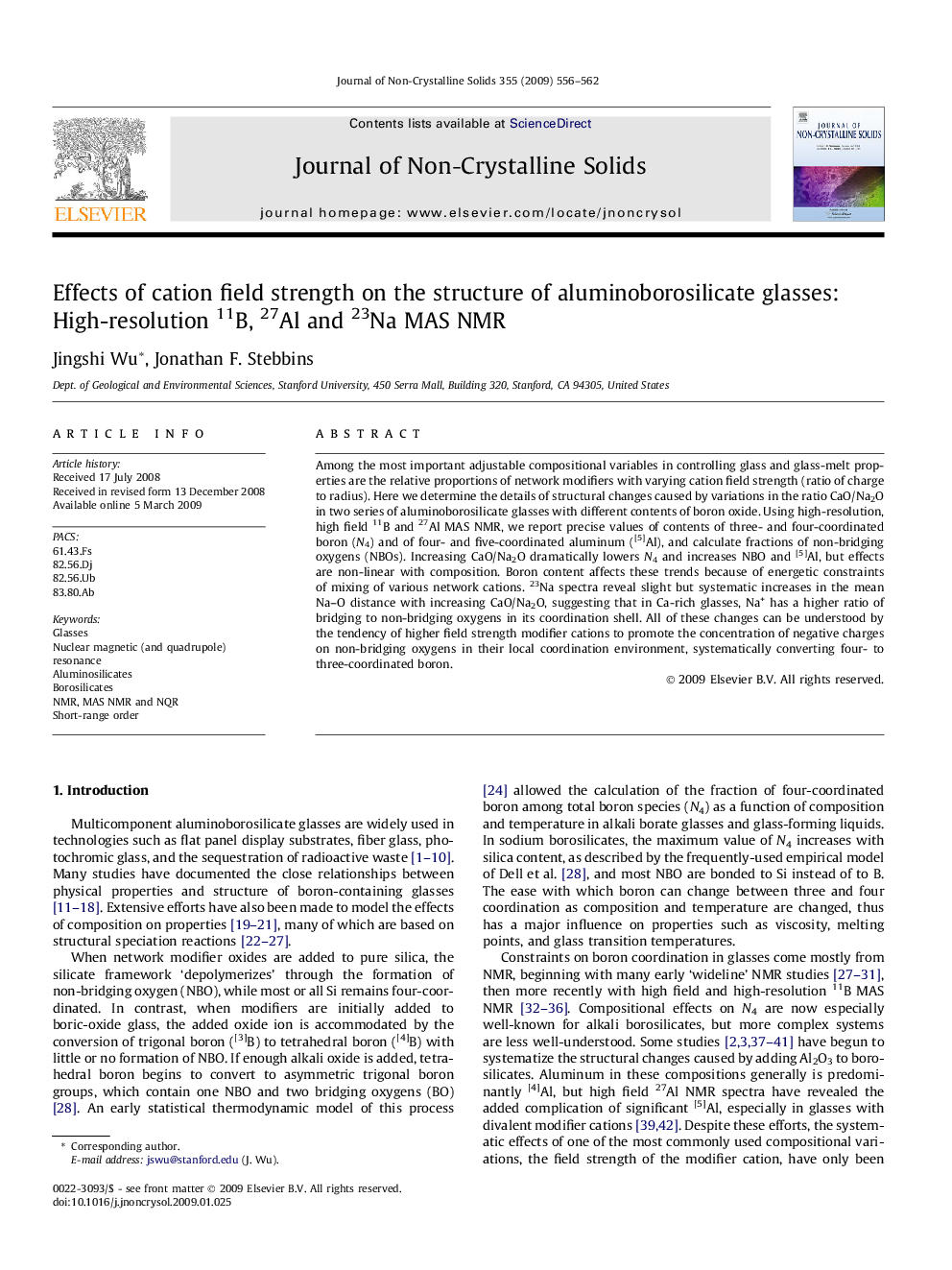| Article ID | Journal | Published Year | Pages | File Type |
|---|---|---|---|---|
| 1483623 | Journal of Non-Crystalline Solids | 2009 | 7 Pages |
Among the most important adjustable compositional variables in controlling glass and glass-melt properties are the relative proportions of network modifiers with varying cation field strength (ratio of charge to radius). Here we determine the details of structural changes caused by variations in the ratio CaO/Na2O in two series of aluminoborosilicate glasses with different contents of boron oxide. Using high-resolution, high field 11B and 27Al MAS NMR, we report precise values of contents of three- and four-coordinated boron (N4) and of four- and five-coordinated aluminum ([5]Al), and calculate fractions of non-bridging oxygens (NBOs). Increasing CaO/Na2O dramatically lowers N4 and increases NBO and [5]Al, but effects are non-linear with composition. Boron content affects these trends because of energetic constraints of mixing of various network cations. 23Na spectra reveal slight but systematic increases in the mean Na–O distance with increasing CaO/Na2O, suggesting that in Ca-rich glasses, Na+ has a higher ratio of bridging to non-bridging oxygens in its coordination shell. All of these changes can be understood by the tendency of higher field strength modifier cations to promote the concentration of negative charges on non-bridging oxygens in their local coordination environment, systematically converting four- to three-coordinated boron.
